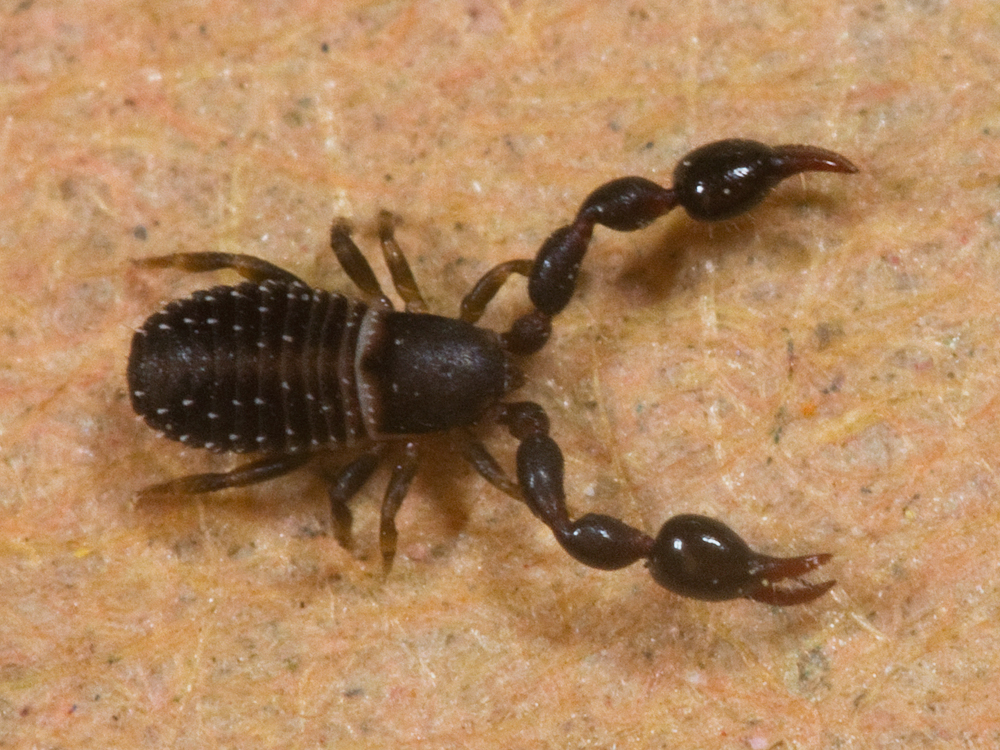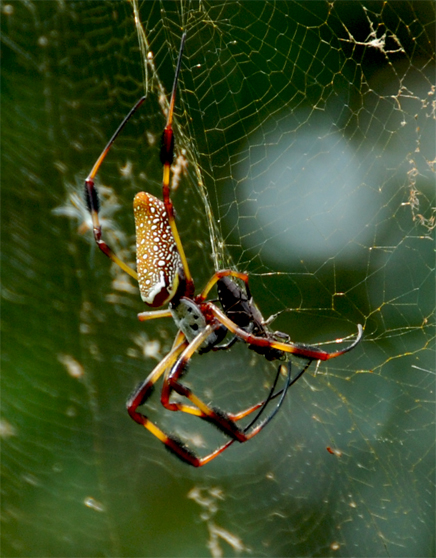|
Marachernes
''Marachernes'' is a genus of pseudoscorpions in the Chernetidae family. It is endemic to Australia. It was described in 1992 by Australian arachnologist Mark Harvey Mark Harvey (born 11 June 1965) is a former Australian rules football player and coach. He played over 200 games during fourteen seasons with the Essendon Football Club, winning three premierships, and was senior coach of Fremantle from 2007 t .... The genus name honours Māra Blosfelds for her contributions to the collection of the type species, combined with ''Chernes'', the type genus of the family. Species The genus contains the following species: * '' Marachernes bellus'' Harvey, 1992 * '' Marachernes perup'' Harvey, 1992 * '' Marachernes simulans'' Harvey, 1992 References Chernetidae Pseudoscorpion genera Taxa described in 1992 Taxa named by Mark Harvey {{pseudoscorpion-stub ... [...More Info...] [...Related Items...] OR: [Wikipedia] [Google] [Baidu] |
Marachernes Simulans
''Marachernes simulans'' is a species of pseudoscorpion in the Chernetidae family. It is endemic to Australia. It was described in 1992 by Australian arachnologist Mark Harvey. The specific epithet ''simulans'' comes from the Latin ''simulo'' ('imitate' or 'copy') with reference to the similarity between this species and '' Marachernes perup''. Description The body length of the male holotype is 2.88 mm; that of the female paratype is 2.80 mm. The colour is mainly yellow-brown, with the carapace and pedipalps dark red-brown. Distribution and habitat The species occurs in Victoria. The type locality is Upper Beaconsfield, some 45 km south-east of the centre of Melbourne, where the pseudoscorpions were collected from beneath tree bark. Behaviour The pseudoscorpions are terrestrial predators Predation is a biological interaction where one organism, the predator, kills and eats another organism, its prey. It is one of a family of common fee ... [...More Info...] [...Related Items...] OR: [Wikipedia] [Google] [Baidu] |
Marachernes Perup
''Marachernes perup'' is a species of pseudoscorpion in the Chernetidae family. It is endemic to Australia. It was described in 1992 by Australian arachnologist Mark Harvey. The specific epithet ''perup'' refers to the type locality. Description The body length of the female holotype is 2.66 mm. The colour is mainly dark yellow-brown, with the front of the carapace and pedipalps dark red-brown. Distribution and habitat The species occurs in south-west Western Australia. The type locality is Perup Nature Reserve, some 40 km east of Manjimup, where the holotype was collected from beneath the bark of jarrah logs. Behaviour The pseudoscorpions are terrestrial predators Predation is a biological interaction where one organism, the predator, kills and eats another organism, its prey. It is one of a family of common feeding behaviours that includes parasitism and micropredation (which usually do not kill the .... References Chernetidae Ende ... [...More Info...] [...Related Items...] OR: [Wikipedia] [Google] [Baidu] |
Marachernes Bellus
''Marachernes bellus'' is a species of pseudoscorpion in the Chernetidae family. It is endemic to Australia. It was described in 1992 by Australian arachnologist Mark Harvey. The specific epithet ''bellus'' ( Latin: 'pretty' or 'lovely') refers to the species’ beauty. Description The body length of males is 2.74–3.14 mm; that of females 2.99–3.34 mm. The colour is mainly yellow-brown, with the carapace A carapace is a Dorsum (biology), dorsal (upper) section of the exoskeleton or shell in a number of animal groups, including arthropods, such as crustaceans and arachnids, as well as vertebrates, such as turtles and tortoises. In turtles and tor ..., pedipalps and legs dark red-brown. Distribution and habitat The species occurs in south-western Victoria and in Tasmania. The type (biology)#type locality, type locality is Separation Creek in the Great Otway National Park, Otway Ranges, where the pseudoscorpions were found beneath eucalypt bark in asso ... [...More Info...] [...Related Items...] OR: [Wikipedia] [Google] [Baidu] |
Chernetidae
The Chernetidae are a family of pseudoscorpions with over 650 described species and 110 genera. Subfamilies Subfamilies and genera include: ;Chernetinae ;Goniochernetinae * ''Calymmachernes'' Beier, 1954 * ''Conicochernes'' Beier, 1948 * ''Goniochernes'' Beier, 1932 ;Lamprochernetinae * ''Allochernes'' Beier, 1932 * ''Anthrenochernes'' Lohmander, 1939 * ''Bipeltochernes'' Dashdamirov, 2005 * ''Lamprochernes'' Tömösváry, 1882 * ''Lasiochernes'' Beier, 1932 * ''Megachernes'' Beier, 1932 * ''Nudochernes'' Beier, 1935 * ''Pselaphochernes'' Beier, 1932 References Chernetidae, Pseudoscorpion families {{Pseudoscorpion-stub ... [...More Info...] [...Related Items...] OR: [Wikipedia] [Google] [Baidu] |
Mark Harvey (arachnologist)
Mark Stephen Harvey (born 17 September 1958) is a museum scientist and biologist. Since 1989 he has been based at the Western Australian Museum. Career Harvey graduated from Monash University in 1983 with a PhD titled "Contributions to the systematics of the pseudoscorpionida (arachnida) : the genus synsphyronus chamberlin (garypidae) and the family sternophoridae". His research interests include the systematics and evolution of arachnids and other terrestrial invertebrates. , he is a member and Vice-President of the International Commission on Zoological Nomenclature. Achievements, awards and recognition Harvey was presented with the 1991 Edgeworth David Medal by the Royal Society of New South Wales, and the Bonnet Award by the International Society of Arachnology in 2013. In 2017, he was awarded the Distinguished Career Award by the Society of Australian Systematic Biologists. References {{DEFAULTSORT:Harvey, Mark 1958 births Living people Australian arachnologi ... [...More Info...] [...Related Items...] OR: [Wikipedia] [Google] [Baidu] |
Genus
Genus ( plural genera ) is a taxonomic rank used in the biological classification of living and fossil organisms as well as viruses. In the hierarchy of biological classification, genus comes above species and below family. In binomial nomenclature, the genus name forms the first part of the binomial species name for each species within the genus. :E.g. '' Panthera leo'' (lion) and '' Panthera onca'' (jaguar) are two species within the genus ''Panthera''. ''Panthera'' is a genus within the family Felidae. The composition of a genus is determined by taxonomists. The standards for genus classification are not strictly codified, so different authorities often produce different classifications for genera. There are some general practices used, however, including the idea that a newly defined genus should fulfill these three criteria to be descriptively useful: # monophyly – all descendants of an ancestral taxon are grouped together (i.e. phylogenetic analysis should c ... [...More Info...] [...Related Items...] OR: [Wikipedia] [Google] [Baidu] |
Pseudoscorpions
Pseudoscorpions, also known as false scorpions or book scorpions, are small, scorpion-like arachnids belonging to the order Pseudoscorpiones, also known as Pseudoscorpionida or Chelonethida. Pseudoscorpions are generally beneficial to humans since they prey on clothes moth larvae, carpet beetle larvae, booklice, ants, mites, and small flies. They are tiny, and are rarely noticed due to their small size, despite being common in many environments. When people do see pseudoscorpions, especially indoors, they are often mistaken for ticks or small spiders. Pseudoscorpions often carry out phoresis, a form of commensalism in which one organism uses another for the purpose of transport. Characteristics Pseudoscorpions belong to the class Arachnida. They are small arachnids with a flat, pear-shaped body, and pincer-like pedipalps that resemble those of scorpions. They usually range from in length.Pennsylvania State University, DepartmentEntomological Notes: Pseudoscorpion Fact She ... [...More Info...] [...Related Items...] OR: [Wikipedia] [Google] [Baidu] |
Family (biology)
Family ( la, familia, plural ') is one of the eight major hierarchical taxonomic ranks in Linnaean taxonomy. It is classified between order and genus. A family may be divided into subfamilies, which are intermediate ranks between the ranks of family and genus. The official family names are Latin in origin; however, popular names are often used: for example, walnut trees and hickory trees belong to the family Juglandaceae, but that family is commonly referred to as the "walnut family". What belongs to a family—or if a described family should be recognized at all—are proposed and determined by practicing taxonomists. There are no hard rules for describing or recognizing a family, but in plants, they can be characterized on the basis of both vegetative and reproductive features of plant species. Taxonomists often take different positions about descriptions, and there may be no broad consensus across the scientific community for some time. The publishing of new data and opi ... [...More Info...] [...Related Items...] OR: [Wikipedia] [Google] [Baidu] |
Endemism
Endemism is the state of a species being found in a single defined geographic location, such as an island, state, nation, country or other defined zone; organisms that are indigenous to a place are not endemic to it if they are also found elsewhere. For example, the Cape sugarbird is found exclusively in southwestern South Africa and is therefore said to be ''endemic'' to that particular part of the world. An endemic species can be also be referred to as an ''endemism'' or in scientific literature as an ''endemite''. For example ''Cytisus aeolicus'' is an endemite of the Italian flora. ''Adzharia renschi'' was once believed to be an endemite of the Caucasus, but it was later discovered to be a non-indigenous species from South America belonging to a different genus. The extreme opposite of an endemic species is one with a cosmopolitan distribution, having a global or widespread range. A rare alternative term for a species that is endemic is "precinctive", which applies t ... [...More Info...] [...Related Items...] OR: [Wikipedia] [Google] [Baidu] |
Arachnology
Arachnology is the scientific study of arachnids, which comprise spiders and related invertebrates such as scorpions, pseudoscorpions, and harvestmen. Those who study spiders and other arachnids are arachnologists. More narrowly, the study of spiders alone (order Araneae) is known as araneology. The word " arachnology" derives from Greek , ''arachnē'', "spider"; and , ''-logia'', "the study of a particular subject". Arachnology as a science Arachnologists are primarily responsible for classifying arachnids and studying aspects of their biology. In the popular imagination, they are sometimes referred to as spider experts. Disciplines within arachnology include naming species and determining their evolutionary relationships to one another (taxonomy and systematics), studying how they interact with other members of their species and/or their environment ( behavioural ecology), or how they are distributed in different regions and habitats (faunistics). Other arachnologists perf ... [...More Info...] [...Related Items...] OR: [Wikipedia] [Google] [Baidu] |
Type Species
In zoological nomenclature, a type species (''species typica'') is the species name with which the name of a genus or subgenus is considered to be permanently taxonomically associated, i.e., the species that contains the biological type specimen(s). Article 67.1 A similar concept is used for suprageneric groups and called a type genus. In botanical nomenclature, these terms have no formal standing under the code of nomenclature, but are sometimes borrowed from zoological nomenclature. In botany, the type of a genus name is a specimen (or, rarely, an illustration) which is also the type of a species name. The species name that has that type can also be referred to as the type of the genus name. Names of genus and family ranks, the various subdivisions of those ranks, and some higher-rank names based on genus names, have such types. [...More Info...] [...Related Items...] OR: [Wikipedia] [Google] [Baidu] |
Type Genus
In biological taxonomy, the type genus is the genus which defines a biological family and the root of the family name. Zoological nomenclature According to the International Code of Zoological Nomenclature, "The name-bearing type of a nominal family-group taxon is a nominal genus called the 'type genus'; the family-group name is based upon that of the type genus." Any family-group name must have a type genus (and any genus-group name must have a type species, but any species-group name may, but need not, have one or more type specimens). The type genus for a family-group name is also the genus that provided the stem to which was added the ending -idae (for families). :Example: The family name Formicidae has as its type genus the genus '' Formica'' Linnaeus, 1758. Botanical nomenclature In botanical nomenclature, the phrase "type genus" is used, unofficially, as a term of convenience. In the '' ICN'' this phrase has no status. The code uses type specimens for ranks up to ... [...More Info...] [...Related Items...] OR: [Wikipedia] [Google] [Baidu] |


.jpg)

_(2).jpg)
